Hate Stalks Stanford
Jared Taylor, American Renaissance, May 12, 2022
There have been “despicable acts.”
This video is available on Rumble, BitChute, Brighteon, Gab TV, 3Speak, UgeTube, and Odysee.
Hate is stalking the campus of Stanford University. On Monday just this week, the vice provost for “institutional equity” issued a campus-wide alert about “a horrific discovery that will shake our community.” He announced “an outreach plan to provide assistance to all who are in need” in addition to the usual “student mental health services.”

He added that when “faced with despicable acts,” we must “have the courage” to fight them, and “the moral responsibility” to help find and punish the guilty.
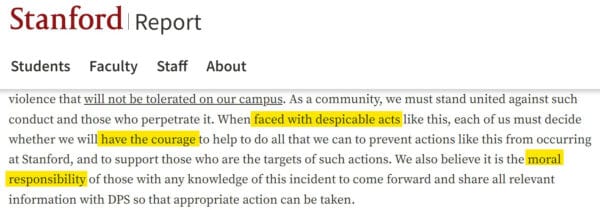
Stanford president Marc Tessier-Lavigne issued a statement expressing his “distress and outrage,” and added, “My heart aches for the members of our Black community.”

Black mental health experts were immediately put on call to help traumatized students. The Black Staff Alliance held sessions for distressed staff, and the Office for Religious and Spiritual Life got ready for prayer sessions.
What started all this? What may have been a noose was discovered hanging in a tree. It was immediately taken down and held as evidence, but no photographs have been released. Was it a noose or just a loop? Or just a rope?
This incident is especially awful, because, as President Tessier-Lavigne said in his statement, it’s part of a series. Just last November there was a noose. Or was there? I looked up the incident, known as “Cords Potentially Representing Nooses Found,” and I read the completed review.
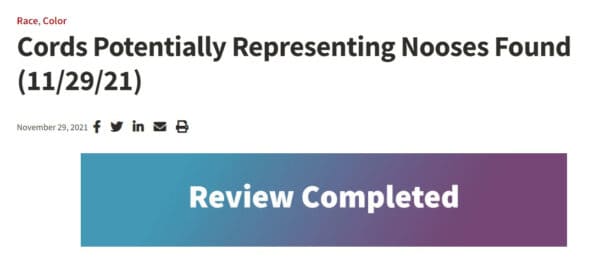
“A student reported seeing two long cords that may represent nooses in a tree.”

There were months horror until a student remembered there had been a rope swing in that tree three years earlier.
So, this noose could be another false alarm, but you can’t be too careful, can you. That’s why one of the action items for dealing with the latest possible noose is, “The university will work toward a protocol and culture of removing ropes from trees.”

Stanford will foster a “culture of removing ropes from trees,” in case people think they are nooses. Why not a culture of realizing that not every rope is a noose?
I bet it’s just another rope. If someone did tie a proper hangman’s noose — not easy, by the way — and hung it as a symbol of lynching, I bet it was a black person.
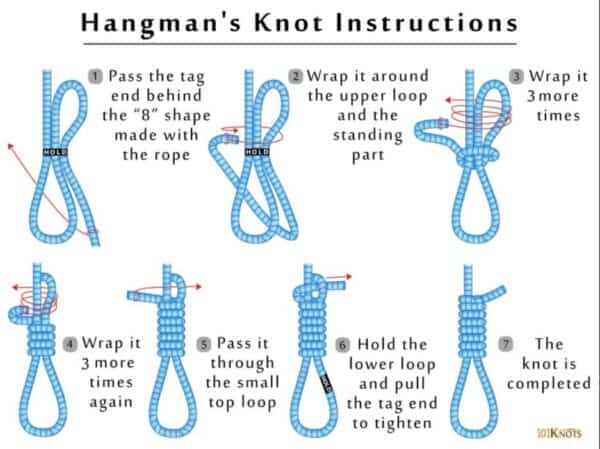
It’s ever so grand to be a victim of racism, and with the old rope trick, every black on campus can feel more important, more aggrieved — and maybe even be excused for handing in an assignment late. Is a white guy who can get into Stanford going to do something as moronic as hang a noose?
What really caught my attention was this line in the equity provost’s letter: “Also underway is the Protected Identity Harm process, a protocol we follow to provide support to students, faculty and staff harmed by an incident like this one.” And there’s a link to the Protected Identity Harm or PIH business.

“Protected identity” is a new one on me, but at Stanford, if you have one and you think it’s been harmed, you can go to a special website and howl. As you can see, PIH reporting is part of Stanford’s “mental health resources,” whose motto is, “Remember . . . it’s okay not to be okay,” especially if you just heard about something that might be a noose.

This is how the PIH portal greets you: “If you are on this website, we recognize that you might have experienced something traumatic. Take a sip of water. Take a deep breath. When you are ready, please proceed to review the site.”

When you are calm enough to use your mouse again, you learn that everything is devoted to “ensuring that students are seen and heard.” Seen and heard.
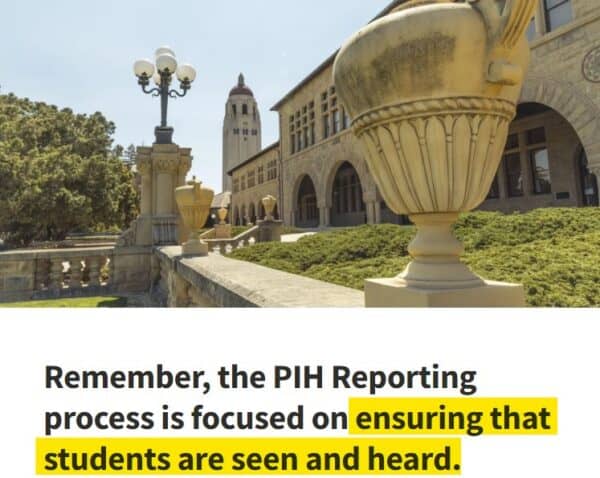
A video by earnest students urges you to report the damage done to your protected identity.
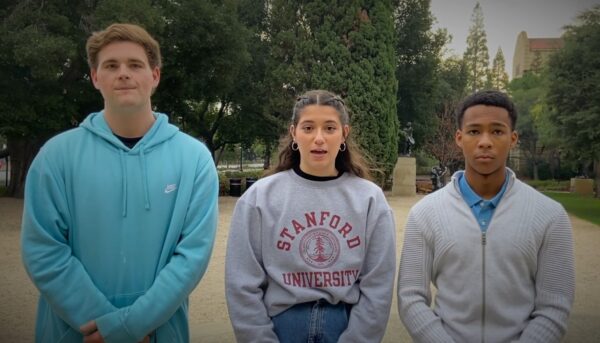
When you’re finally ready, you learn that “This can be done anonymously and can be done by anyone in the world.”

Anyone, anywhere.
If you are a student and need “healing,” you can get free treatment from a bewildering variety of deans, support staff, mental health gurus, equity specialists, etc. They can serve up solutions to suit every victim’s taste. Mediated Conversation, Shuttle Mediation, Restorative Justice.

You can get Indigenous Circle Practices, which can include talking circles — presumably different from talking in circles — Counseling in a clinical, therapeutic setting, and Wellness Coaching.
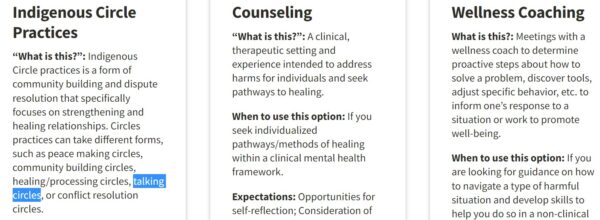
You can have a confidential meeting with an ombudsman, enjoy Outdoor/Nature Based Healing, “to connect with the outdoors as an aid to healing.” Or you can sort yourself out in an educational workshop.

All because a rope might be a noose.
The PIH site reminds you that you can also nestle in the bosom of people just like you. You can go to the clubhouse built for your very own protected identity. Stanford has them for Asians, Blacks, Chicanos and Latinos, LGBT, Markaz — that’s for Muslims — Native Americans, and women.

Nothing for whites or men, of course. I think they don’t have protected identities. Here’s the Markaz, the Muslim clubhouse. Pretty spiffy, if you ask me.
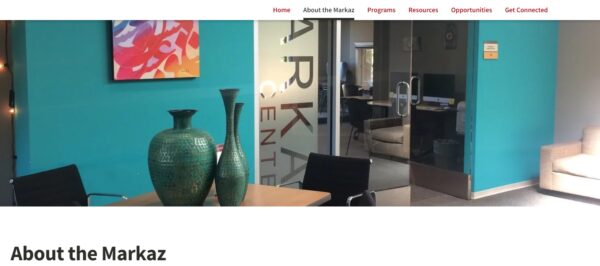
And here is what Stanford calls “Black House,” celebrating 45 years of the never-ending struggle against white supremacy.

But back to the rope that might be a noose.
Stanford is clearly dying for you to report hate. All those healers and therapists can’t justify their paychecks if they aren’t hearing and seeing students who have been shocked into deaf-mute invisibility. Just reading about what could be a noose seems to give blacks PTSD. But the worst of it is the temptation it dangles before anyone with a protected identity. There is an army of bureaucrats that worships, adores, and pets the “victims,” so much so that some people are going to fake it. And then the bureaucrats joyfully go to work and President Tessier-Lavigne can virtuously indulge in distress and outrage. It’s a sick system that encourages people to find hate and horror everywhere, and makes any imagined insult a near-mortal threat.
Maybe President Tessier-Lavigne doesn’t know that noose after noose has fizzled out. You remember this: “Bubba Wallace Shares Terrifying Details of What Happened After the ‘Noose’ Incident.”
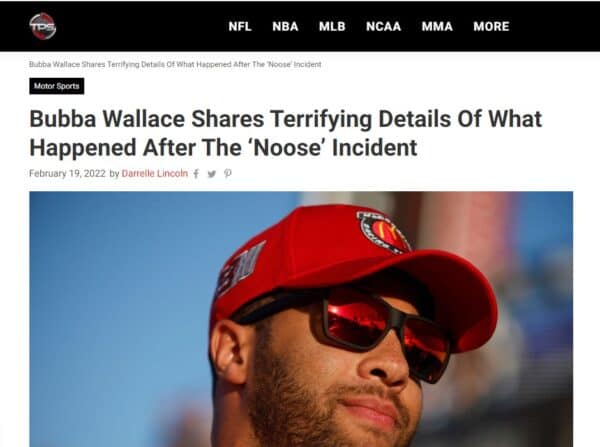
There was coast-to-coast distress and outrage when a “noose” was found in a garage assigned to a black NASCAR driver. It took a swarm of FBI agents to figure out it was a pull-down rope that had been in the garage for months before it was even assigned to Bubba Wallace.
Here’s a headline: “Amazon shuts down Connecticut construction site after seven apparent nooses found.”

Thousands of workers were kept idle and there was a $100,000 reward for catching the bigot. The apparent nooses were loops of wiring and cable.
Even better: “’Noose’ found in Michigan State dorm was actually lost shoelace.”
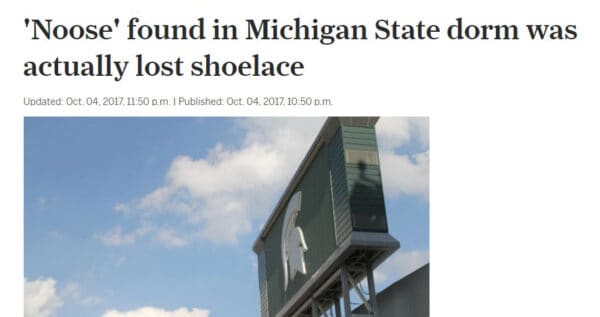
A full-tilt police investigation found that this brand of laces was “packaged in a way that someone could perceive them to look similar to a noose.”

And here is “’Noose’ incident stirs emotion on Del. Campus.”
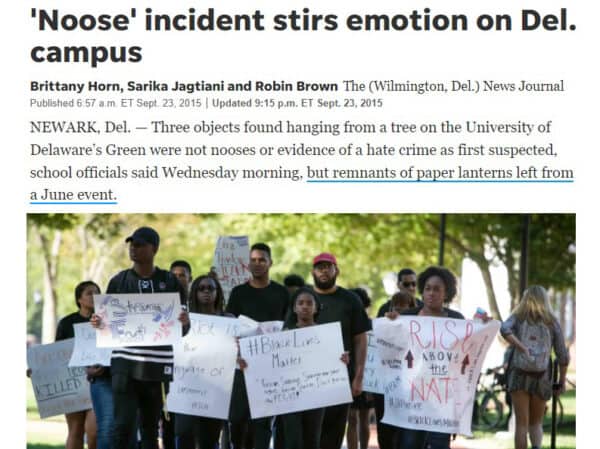
Those black protestors are part of a festival of guilt and grievance over “nooses” that turned out to be wire frames from paper lanterns left over from a party.
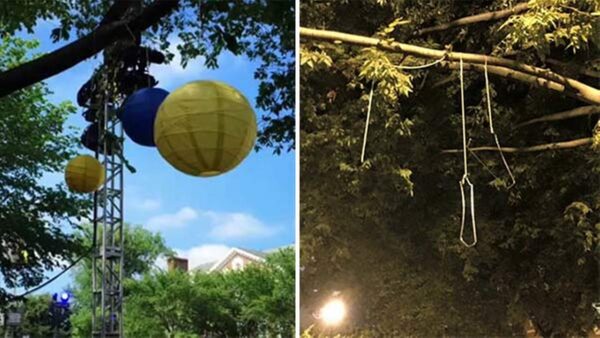
This article lists eight different campus noose hoaxes.

If you know about a genuine noose that a bona fide white man put up on campus to scare blacks, let me know, will you?
But a phony noose is almost as good a real one. Even the skeleton of a paper lantern is a valuable reminder of how awful white people are and how oppressed black people are. The campus then holds three teach-ins and a candle-light vigil, and the provost promises to add a new wing to the Black Student Union.
You see, those hate-hunting bureaucrats are right: The problem is white people — the dupes and madmen who encourage, excuse, and fall for this foolishness every time.















